In addition to writing blog posts, now and then I write songs. Here’s my latest. It’s a deep reflection on the most challenging decision I’ve ever made in my life—to end the 5 year relationship I’ve had with Sarah. There’s a lot I could write about that, and I’m sure I will, but for now I mostly want to let the song speak for itself, and then reflect on why I wrote it and why I’m sharing it.
While queuing up the 100× vision post last week, I realized I hadn’t published another vision doc that I wrote awhile back and had been sharing with people, so I figured out would be good to get that out too. In contrast to the 100× vision, which is imagining the 2030s, this one is the adjacent-possible version of the vision—the one where if you squint at the current reality from the right angle, it’s already happening. I wrote this one originally in November 2020. There’s also A Collaborative Self-Energizing Meta-Team Vision, which is a looser sketch.
This is intended to evoke one possibility, not to fully capture what seems possible or likely.
In fact, it is highly likely that what happens will be different from what’s below.
Relatedly, and also central to this whole thing: if you notice while reading this that you feel attracted towards parts of it and averse to other elements (even if you can’t name quite what) then awesome!
Welcome that.
Integrating everyone’s aversion or dislike or distrust or whatever is vital to steering towards the actual, non-goodharted vision. And of course your aversion might be such that it doesn’t make sense for you to participate in this (or not at this phase, or not my version of it). My aim is full fractal buy-in, without compromise.
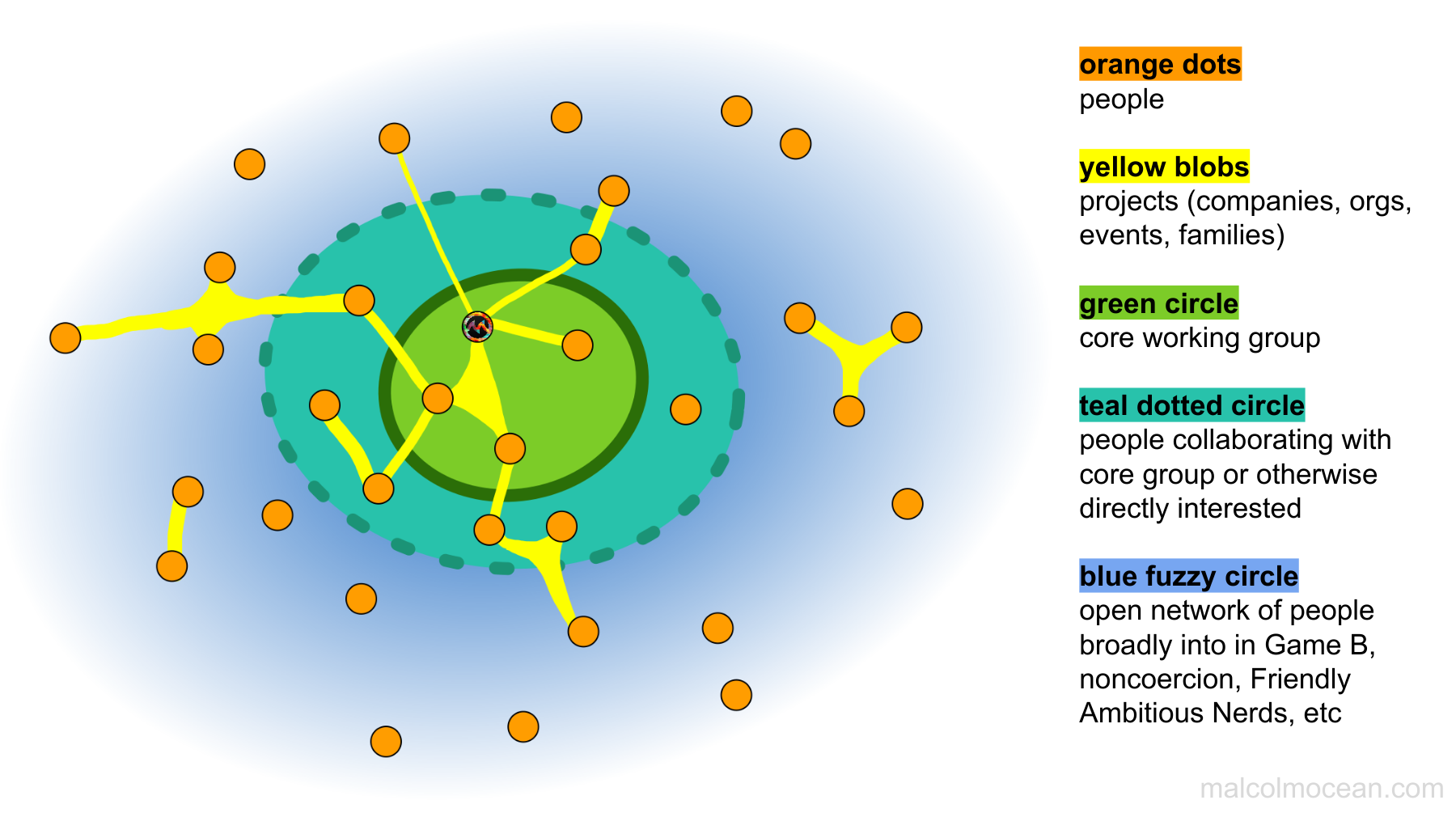
This diagram (except for the part where one of the people is marked as me 😉) could apply to any network of people working on projects together, that exists around a closed membrane, but I want to elaborate a bit more specifically about what I have in mind.
The Collaborative self-energizing meta-team vision public articulation 2020-10-19 is describing the outermost regions of the above diagram, without any reference to the existence of the membranes. The open-network-ness is captured by this tweet:
This is a beacon—want to work with people doing whatever most deeply energizes you? Join us!…how? There’s no formal thing.
Joining = participating in this attitude.
The attitude is one of collaboration in the sense of working together, and in particular working together in ways that everybody involved is excited about and finds energizing and life-giving. Where people are motivated both by the work they’re doing as part of the collaboration, and by the overall vision. That’s not to say it’ll all be easy or pleasant or straightforward—working with people is challenging! And that’s where the other layers come in.
I’m now going to jump to the innermost, closed membrane, because the dotted-line teal group kind of exists as a natural liminal area between that and the wider group.
» read the rest of this entry »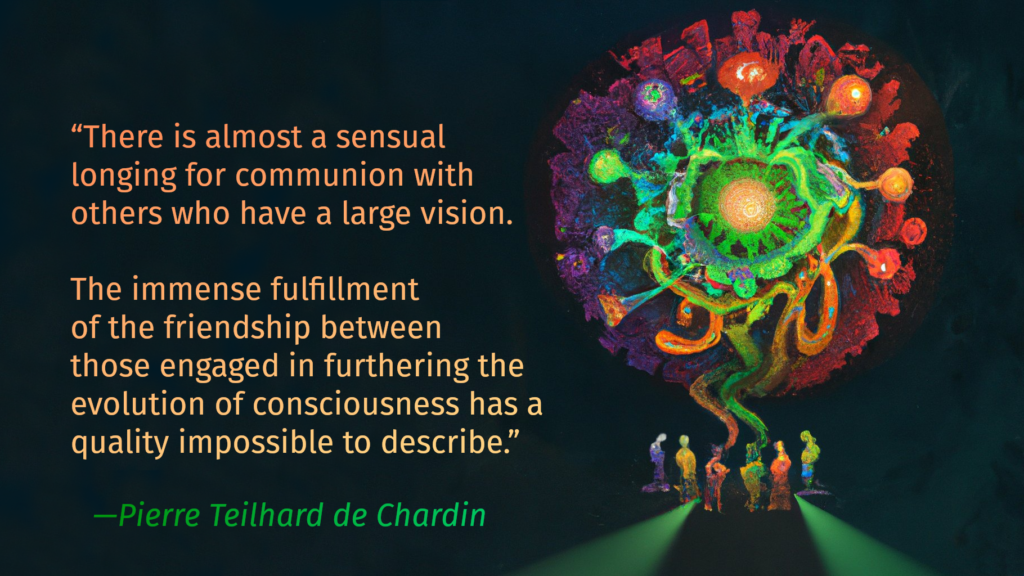
Last year, I was inspired by a fellow friend and consciousness-evolution-furtherer, who sent a screenshot of his “100× vision” in a newsletter. I replied “I feel dared by you doing that to do something similar myself.” A couple months later, I finally wrote something up. At the time it felt too big and scary to post anywhere, but perhaps I’ve grown, or just gotten more comfortable with it, or shared it with enough people who responded positively… because I now feel pretty easeful about posting it to my blog.
I’ve written some adjacent-possible visions. This one is about 10-15 years into the future—sometime in the 2030s—and is written as if I wrote it then, in the present tense, describing what I see when I look around at my life. It’s not a complete description of what I want—it’s actually very abstract and is designed to be a sort of generic placeholder vision that many people would also find themselves wanting. A friend recently challenged me to make an actual personal vision, so I’ve now done that too and it’s called “Malcolm’s bespoke personal selfish vision” but that I’m also not ready to publish. Wants can be very vulnerable!
Without further ado: here’s what I see from an imagined place in the 2030s:
I’m deeply embedded in beautiful, bountiful, brilliant collaborative human superintelligence on many scales, of which I’ll highlight 3 below. I’m not the leader on any of these scales – to some extent because there is no single leader but also because inasmuch as there is, that’s not what I’m called to do. But I was one of the major figures getting it all off the ground years ago, because I knew I needed all of this to exist in order to be thriving this much… I wouldn’t settle for anything less, and nobody else was already simply doing it in a way I could join, so I Sourced some of it.
Since precisely *what* we’re all working on at this point is highly contingent and path-dependent on both what else has happened and is happening in the world, as well as on who’s involved, and I’m writing this from a trans-timeline perspective that’s independent of those details, I can’t specify in detail what projects we’re working on, but I can describe the rough structure of things as they look right now in 2035.
I’m part of a slowly growing group of 10-20 people who are capable of getting profoundly in sync and are thus able to actually think as well as… it’s hard to put it but something like “as well as a single human could if it had 10-20x as many neurons”. Another analogy might be “a five year old is to an adult as an adult is to this collective brain”. We’re able to solve problems better than almost any individual could (except given specific expertise). Individual wisdom is integrated—the group is wise about anything that any individual in the group is wise about.
This group is one of several that are connected, and we’ve had some splittings and mergings over the years to find better configurations of people.
We have been and are ongoingly achieving this through a combination of…
» read the rest of this entry »What does it look like to aim for flow & sovereignty? There’s a kind of conversation that can surface all that’s present for people and allow a lot of sensemaking to occur. How do you get to such a conversation? There are various elements:
There’s also a matter of “what is the point of this conversation?” I think the best conversations have an orientation towards some fluid emergent combination of:
There might also be a specific topic, perhaps reflecting on an experience that everyone just went through together, or a question that one person has convened the conversation about.
I sometimes call these sorts of conversations a “co-what-now” process. “What now” is both about “what do we do now?” and also simply about making space to collectively hold the implications of whatever has just happened and what everyone’s sitting with. And when it’s working, there’s a lot of getting on the same page, that emerges clarity of the situation and of the next steps, and leaves people feeling satisfied and understood.
It seems to me like for some groups, eg ones oriented towards operating in a metarational way, it makes sense for them to aim towards having conversations like these on a consistent basis, not necessarily formally but in terms of the basic stance & attitude, and to incline towards whatever makes these conversations more satisfying.
And if one person is clear that the thing they need to do is some specific solo project, then perhaps they don’t participate in the co-what-now conversation at all (or beyond showing up to say “I’m gonna go do X”). There’s obviously a cost to having that person not present, but ideally there’s a collective sense of trusting that that person is taking that into account in their prioritizing. And if not, then that gets talked about. And maybe that person wants the large-group co-what-now conversations to happen at a different time of day or something. And maybe the conversations are recorded and the person listens to them later, or maybe someone else fills them in. Or maybe they just take some distance for a day or a week, and this is also workable.
And maybe one person isn’t actually internally clear about what they need to do, but they’re conflicted and tangled about something that feels really pressing and urgent but they don’t know how to solve it. In such a case, it’ll be hard for that person to settle into a collective train of thought & not-knowing because their situation will be dominating their experience. It may be possible for them to expand their awareness while holding onto that situation, so they can step into co-flow, although if they experience doing so and their situation often continues to remain unresolved at the end of the conversation, they will—accurately!—feel like the conversation is failing to address what’s most pressing to them, which will produce distrust and oscillation.
If they can’t expand their awareness enough to get into a kind of collective flow (which should be very rare by the time you get to a fully collaborative group but will be common with a partway there group) then there’s a sense in which what they need to do is whatever is going to solve their situation and liberate their attention so they can rest. That might not be a total solution, but something that makes the situation feel handled. And some or all of the other people might be able to support them in that with conversation or coaching or labor or whatever else, but also perhaps not. And the other people may or may not feel appetite towards supporting them in that. And the others may also want to still convene with each other, sensing into what-now in the context of the situation of one person being preoccupied by something else.
Note that one interesting phenomenon is that a conversation of 2 or more people yields a clear next step for one person, that makes obvious sense to do, but when they go to do it they find it’s not so obvious anymore. This can be for a few reasons:
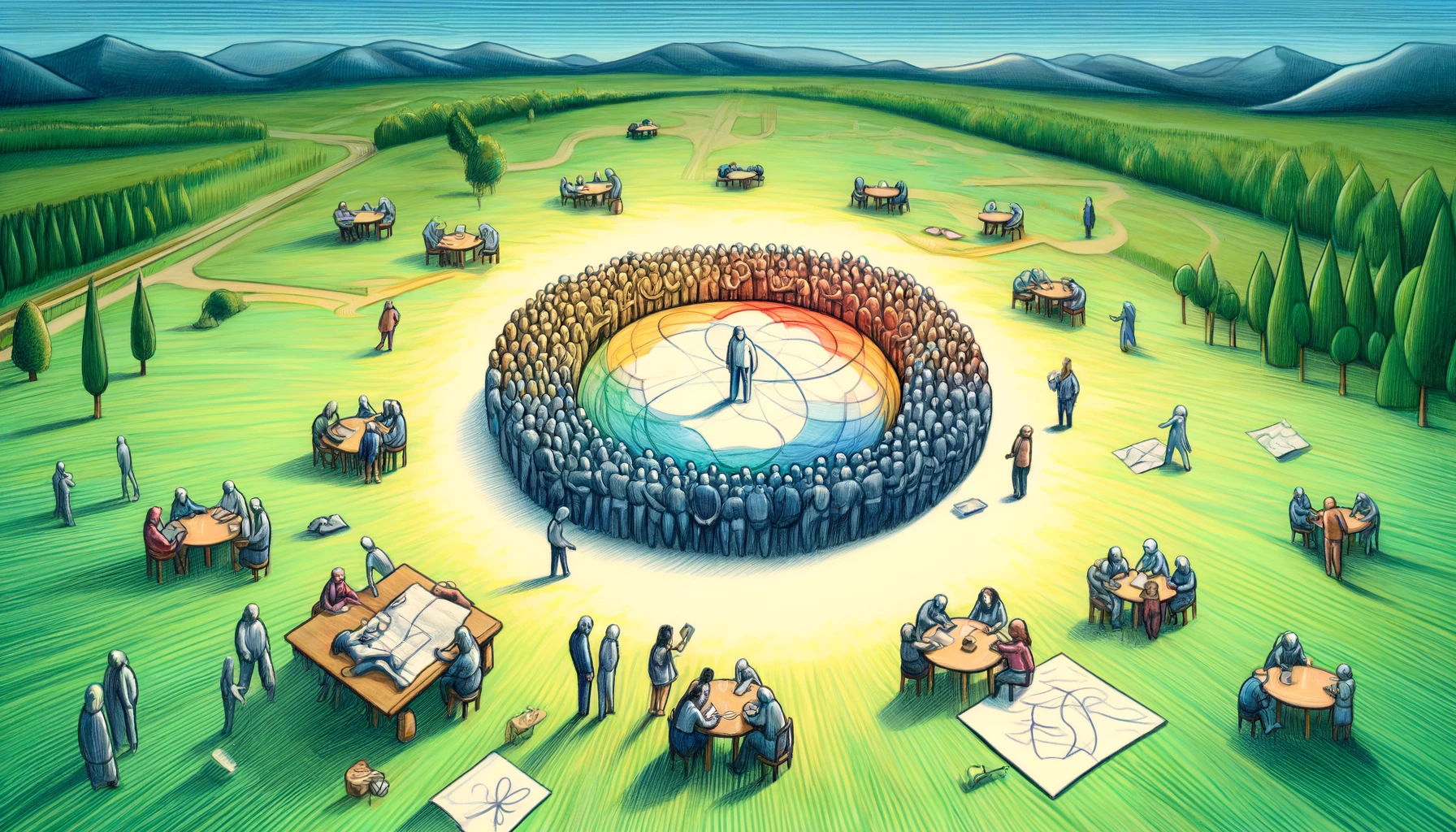
This post is an excerpt from How we get there: a manual for bootstrapping meta-trust, my ebook on how to practice the art and science of group coherence in a way that’s exquisitely sensitive to top-down and bottom-up dynamics.
What’s the difference between positive & negative motivation?
I like to talk about these as towardsness & awayness motivation, since positive & negative mean near-opposite things in this exact context depending on whether you’re using emotional language (where “negative” means “bad”, ie “awayness”) or systems theory language (where “negative” means “balancing” ie “towardsness”). I have a footnote on why this is.
There’s a very core difference between these two types, both inherently to any feedback system and specifics to human psychology implementation.
Part of the issue is (and this is why I say positive vs negative motivation are different in all systems) you fundamentally can’t aim awayness based motivation. In 1-dimensional systems, this is almost sorta kinda fine because there’s no aiming to do (as long as you don’t go past the repulsor). But in 2D (below) you can already see that “away” is basically everywhere:
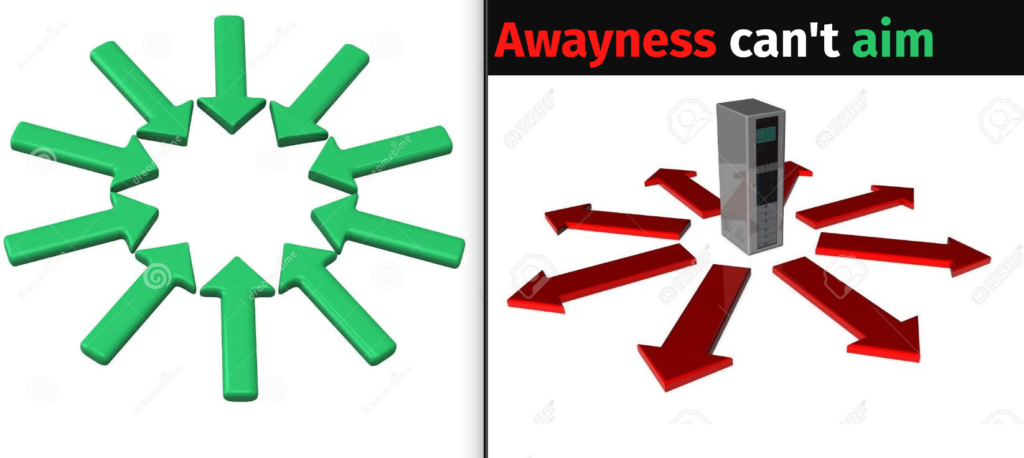
Whereas with towardsness, you can hone in on what you actually want. As the number of dimensions gets large (and it’s huge for most interesting things like communication or creative problem-solving) the relative usefulness of awayness feedback gets tiny.
Imagine trying to steer someone to stop in one exact spot. You can place a ❤ beacon they’ll move towards, or an X beacon they’ll move away from. (Reverse for pirates I guess.)
In a hallway, you can kinda trap them in the middle of two Xs, or just put the ❤ in the exact spot.
» read the rest of this entry »Most of my posts are essays of one kind or another. This one is mostly to announce that if you’re only following my blog, you’re missing out on some of my thinking which is starting to show up in other places.
One of these is I’ve now done half a dozen podcasts which you can find listed in detail here, or in brief here:
I want to do another podcast episode around monthly this year, so let me know if you want to have me on your show, or recommend me to an interviewer you like. (I’m down for both interview-style conversations and more deep jamming dialogue-style ones.)
Another medium is that I’m starting to post videos to my own YouTube channel more, including:
Let me know what topics you’d like to hear me speak on!
I’ve also been writing a lot on Twitter, as uhhh you may know from the frequent remark at the beginning of my posts the last couple years saying “this blog post is adapted from a twitter thread…” We’re incubating a beautiful little scenius there and would love to welcome you. Seriously, you don’t know what you’re missing.
While I’m at it: I’m interested in doing some guest blogging, so if you know anyone who runs a publication of any kind that might increase my visibility, let me know! I’m particularly interested in finding other places to share my thoughts on motivation, productivity, goal-setting, etc.
(If you’re reading this in my email newsletter, you can just hit reply; if not, hit me up on twitter @Malcolm_Ocean)
I had a concept that my 2021 would be called Always Already Dancing, and while that has been a background theme in various ways, there’s been a much more prominent theme, which is Catching my Breath.
The most overt element of this is that I began taking weekly days off, where I begin the day with nothing scheduled, no intentions, and no open browser tabs, and then I do whatever I feel like all day. I also aim to not add anything at the start of the day as a plan for later in the day, but to remain in improvisational flow, just doing what I’m doing right now.
But the underlying thread of catching my breath is one that’s woven through much of the last year on various scales, so here’s the story of my year of catching my breath, told in some semblance of chronological order of when certain elements arose, although many were happening in parallel throughout the year.
As I wrote in last year’s review, 2020: Free to Dance, my partner Sarah and I moved out of the culture incubator I’d been living in for 7.5 years in Waterloo, ON, and out to British Columbia on the west coast, where we’re working on creating a new culture incubator in Victoria, BC on Vancouver Island.
The need for a new culture incubator emerged not just out of us wanting to be in BC’s climate, but from some divergence in how we saw the incubation process needing to work. We’re still, as far as I know, basically on the same page about what the new collaborative cultural platform that we’re aiming for looks like when it works, but we’ve got a different idea of how to get there and how to operate in the meantime.
» read the rest of this entry »As someone currently experiencing substantial amounts of collective intelligence on Twitter, here’s some of what I’m seeing as the emerging edge of new behaviors and culture, and one bottleneck on our capacity to think together and make sense of the world.
Some of us are pioneering a new experience of Twitter that’s amazing, and that wouldn’t be possible on any other platform that exists today.
Conversation is thinking together.
Collective intelligence is, at its core, good conversation.
Many people, on and off Twitter, think of it as a shouting fest, and parts of it are. And… at the same time, on the same app, with the same features but some different cultural assumptions, there are pockets where people are meeting the others, making scientific progress, falling in love, healing their trauma, starting businesses together, and sharing their learning processes with each other.
Those sorts of metrics—as hard to measure as they are—form a kind of north star for Twitter. This creature has the potential to be the best dating app (for some people) and a way better place for finding your dream job than LinkedIn (for many people). And so on.
Cities have increased creativity & innovation per capita per capita, ie when you add more people each person becomes more, because more people & ideas can bump into each other. The internet is a giant city, and this is far more true on Twitter than any other platform, particularly because of how tightly it allows the interlinking of ideas with Quote Tweets.
Twitter is very much about “what’s happening [now]” but, as the world has been collectively realizing over the past decade, simply knowing “what’s happening” in some isolated way is meaningless and disorienting. Meaning comes from filtering & distilling & contextualizing what’s happening, and this is part of what Twitter is already so brilliant for, because everyone can talk to everyone and the ultra-short-form non-editable medium encourages you to tweet today’s thoughts today rather than drafting them today, editing them tomorrow, then scheduling them for next week’s newsletter.
When someone makes a quote-tweet, they’re essentially saying “I have some thoughts I’d like to share, that relate to the tweet here”. This might be a critique of the quoted tweet/thread, or it might be using the quoted material as a sort of footnote of supportive evidence or further reading or ironic contrast. This meta-commentary is very powerful, whether it’s used by someone reflected “I think what I really meant to say here was” or someone framing a thread they just read as an answer to a particular question they and their followers might care about.
Currently, however, it’s impossible to QT two or more tweets at once. This means that in the natural ontology of Twitter, there is no way to properly compare or contrast or relate different thoughts.
This contributes, I think, to the fragmented & divergent quality of thinking on Twitter: the structure of the app makes it hard to express convergent thoughts. You can use screenshots… but then all context & interlinking & copy-pastability is destroyed. You can have a meta-thread that pulls a bunch of things together… but each tweet in that thread is still only referencing one other tweet, so there’s no single utterance that performs the act of relating other utterances.
The amount of utterances that need to connect two other pre-existing utterances is huge. Thoughts shaped like:
Similarly to how the #hashtag & @-mentions evolved from user behavior, and the Retweet functionality evolved out of people copying others tweets and tweeting them out with “RT @username: ” at the start, and Quote Tweeting evolved out of people pasting a link to another tweet within their tweet… MultiQT is a natural evolution of the “screenshot of multiple tweets” and “linking tweets together as a train of thought using multiple QTs in a thread” behaviors.
I didn’t even realize quite how much I’d want this until I started mocking up the screenshots below by messing with the html in the tweet composer and being so sad I couldn’t just hit “Send Tweet”. I can already tell that like @-mentions and RTs, once we’re used to this it’ll feel absurd to think we ever lived without it.
» read the rest of this entry »A protocol is a set of behaviors and expectations for interaction, whether explicit, such as NVC (“Non-Violent Communication”), or just the unspoken cultural norms of any social group. Shared protocols can dramatically increase people’s ability to collaborate and trust each other. But trying to get everyone to operate the same way is imperial, like trying to get everyone to speak the same language, and thus generates a ton of resistance if you try it.
The meta-protocol is the translation process, the dance by which trust is built between and within people. It navigates the fractal puzzle of the fact that when you and the other have different protocols, you need to somehow deal with the fact that you don’t have a shared protocol, while not having a shared protocol.
However, the meta-protocol is still relevant even if two people think they’re already following the same protocol… insofar as that protocol is inadequate, ie:
…the meta-protocol is what allows them to notice that and iteratively improve whatever they’re doing and patch those gaps. (Such patches might produce a new ongoing implicit or explicit protocol, or not.)
No matter how perfect a hypothetical protocol might be, it’s impossible to systematically address everything that arises in the complex experience of being human together. There will be gaps, including during the learning process for how people can come to use a protocol consistently. The meta-protocol is whatever fully and completely answers the question of “well, then what do you do in the meantime, or when those gaps occur?”
» read the rest of this entry »You know that thing where you spend a lot of time NOT doing something?
Like you can’t actively do anything else (spontaneously nor decisively) because you’re supposed to be doing the thing, but you’re also not doing the thing because of some conflict/resistance.
I’ve decided to call this knot-doing. (I have another post in the works called knot-listening). You can just pronounce the k if you want to distinguish it from “not doing” in the daoist sense. Or call the latter “non-doing” and be done with it.
Here are some examples of knot-doing:
You might be inclined to just call this “procrastination” but I think that knot-doing is a more specific phenomenon because it points at the lack of agency experienced while being in the state of not doing something—your agency is tied up in knots. A student may be procrastinating if they go to a party instead of working on their homework, but if they’re letting go and having fun at the party then it’s not knot-doing. I’m arguably procrastinating on fixing my phone’s mobile data after a recent OS upgrade, but I’m doing loads of other stuff in the meantime.
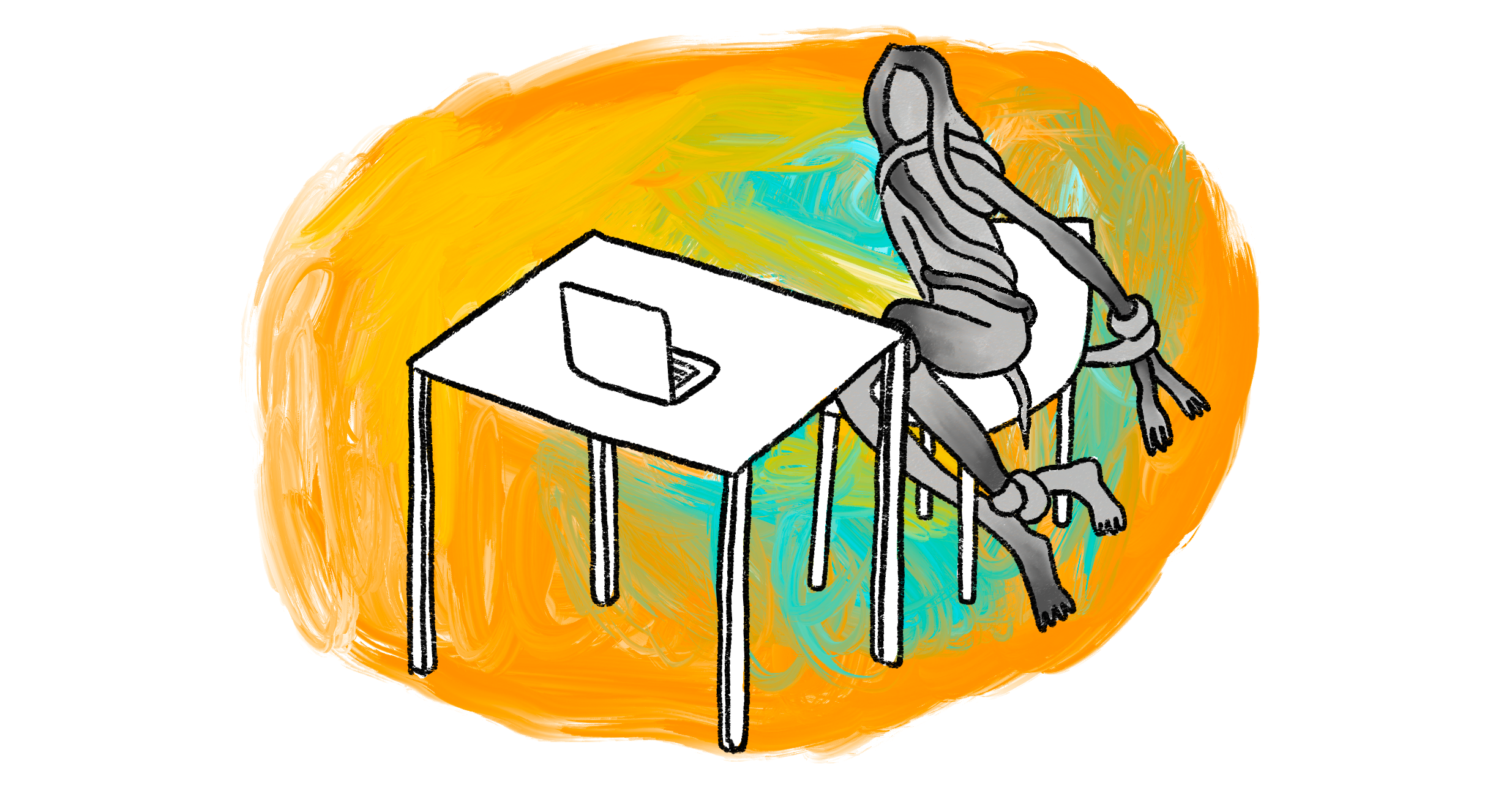
Unresolved internal conflict, most fundamentally. You’re a bunch of control systems in a trenchcoat, and if part of you has an issue with your plan, it can easily veto it and prevent it from happening. Revealed preferences can be a misleading frame, but if you leave aside what you think you want for a moment and look at yourself as a large complex system, it’s clear to see that if the whole system truly decided to do anything in its capability, it would simply be doing it. I want to type these words, my hands move to type them. Effortless.
Sex can be a workout, physically, depending on the position, but until we actually become tired, we usually also experience it as effortless when we’re so in the flow that we just want to do it. Same with dancing. Being in a flow state, whether work or play, is basically the opposite of knot-doing.
I want to break down my above statement: “You’re a bunch of control systems in a trenchcoat”. First, what’s a control system? The simplest and most familiar example is a thermostat: you set a temperature, and if the temperature gets too low, it turns on the furnace to resolve that error, until the temperature measured by the thermostat reaches the reference level that you set for it.
But what prompts you to adjust the temperature setting? You probably walked over to the thermostat and changed it because you were yourself too hot or too cold. You have your own intrinsic reference level for temperature, which is like a thermostat in you. Except instead of just two states (furnace on, furnace off), your inner thermostat controls a dense network of other control systems which can locomote you to adjust the wall thermostat, open a window, put on a sweater, make a cup of tea, or any number of other strategies (habitual or creative) to get yourself to the right temperature.
Without explaining much more about this model (known as Perceptual Control Theory) I want to point out an important implication for internal conflict, by way of a metaphor: if your house has separate thermostats for an air conditioner and a furnace, and you set the AC to 18°C and the furnace to 22°C……. you’re going to create a conflict.
What actually happens in this scenario?
» read the rest of this entry »